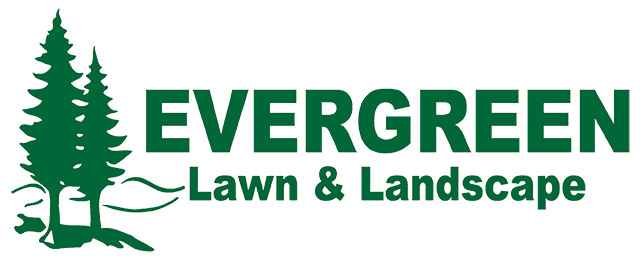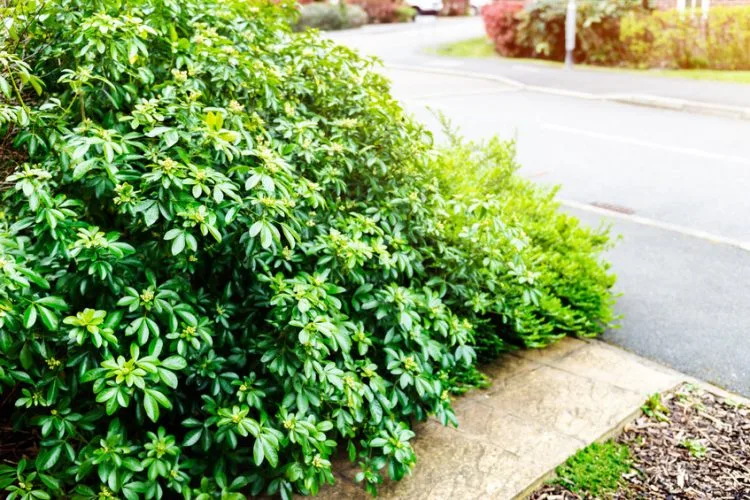There are many reasons people decide to remove shrubs. They may have died over winter or contracted some type of disease. The shrub may have become overgrown due to lack of pruning.
Sometimes people buy homes and want to change the landscape. Or the shrub may just require too much upkeep.
If one of these reasons applies to you, you’re in the right place. Today I’m going to tell you everything you need to know about removing a large shrub.
First and Foremost
Find out where your utility lines are. Call 811, the national call-before-you-dig number. Utility workers will come out and mark your lines for you.
The positions will be marked approximately. Sometimes the exact location of the lines will shift due to humidity.
You will also need to make sure there are no power lines above your shrub and if there are, you should call in a professional.
Decide What’s Next
Before you begin removing a shrub, you need to decide what you are doing with that space afterwards. I always prefer to map out my plans beforehand. Then I make a list and purchase any plants or flowers that I need.
This is a great time for seasonal planting. Evergreen Lawn & Landscape would be happy to help you find the perfect plants or flowers to fill the spot.
If you’re not sure what you want to put in the space, but you know you’re ready for a landscaping change, we can help in that area as well. Maybe installing something that requires very little maintenance like a path or a water fountain is more up your alley.
Gather Supplies

The next thing you’ll need to do is gather your supplies. Here’s a list of what you’ll need.
Supplies
- Bypass loppers
- Bow saw
- Chainsaw- optional
- Shovel
- Trowel
- Garden mattock or hatchet
- Protective gear
RELATED TIP: What to Trim in February
Depending on the size of your shrub, you can choose which tools will work best for you. Bypass loppers can cut branches up to 1.5 inches thick.
For thicker branches, up to a foot in width, a bow saw is the tool of choice. Many homeowners prefer to just use a chainsaw though because they are able to cut through all the branches easily.
Please use chainsaws with caution. In the 2011 Agrilife Extension on Chainsaw Safety, David W. Smith says, “Chainsaws are still among the most dangerous power-driven tools available on the market.”
The shovel and trowel will be used for digging out the root system. The garden mattock or hatchet is used for cutting through large roots. A mattock cuts horizontally, which makes it an ideal choice for chopping a shrub’s roots.
In terms of protective gear, you will need to wear long sleeves and long pants to protect your body. If using a chainsaw, wear protective chaps to protect your legs. In the event that the chainsaw hits your legs, the chaps will jam the chain and stop the saw from rotating.
Step 1
De-branch the shrub. Use the loppers to remove small branches. Then switch to the bow saw or chainsaw for larger branches.
It is necessary to remove all the branches, so that only the stump remains. Trying to remove a shrub with branches is dangerous and frustrating.
Step 2
Next, de-root the shrub. Use the shovel to dig around the roots until the root ball is exposed.
The trowel should be used to remove dirt stuck to the roots. This will make the plant lighter and easier to work with. You can try shaking off the dirt once the roots are exposed.
Once the roots and root ball are clearly visible, use the garden mattock to sever the roots. If the roots are very large, you may need to use a hatchet.
RELATED TIP: How to Winter-Proof your Landscape
In order to prevent the shrub from re-growing you will need to remove the root ball and the main roots.
Another option is to cut the roots off as much as you can and then apply a chemical treatment to the stump. Root killer should be used sparingly.
You’ll need to do this right after cutting the branches off. This will not work on old stumps.
Once you cut down the roots, drill holes in the stump and pour in the chemical treatment.
Neil Sperry discusses doing this for invasive privet hedges in his 2021 column, “The Most Invasive Shrub in Texas.”
This method takes time, months even. It may be necessary to apply the treatment more than one time. Furthermore, please note that you will not immediately be able to plant anything new here.
Final Thoughts
Shrub trimming is important and needs to be done on a regular basis. Otherwise, the shrub will become overgrown and may even take over your other plants and flowers.
Diseased shrubs need to be removed quickly to prevent the spread of disease. Be careful how you dispose of diseased branches and roots.
Make sure they are away from any other plants. To be on the safe side, it is common practice to burn the branches and roots of diseased shrubs.
An overgrown, dead, or diseased shrub will ruin the look and feel of your garden. Your landscape should be a harmonious place that brings you joy. Keep up with shrub trimming and necessary removals to ensure that your yard looks beautiful year-round.



Comments (0)
Thanks for your comment!
Thanks for your feedback! Your comments have been successfully submitted! Please note, all comments require admin approval prior to display.
Error submitting comment!
There is a problem with your comment, please see below and try again.